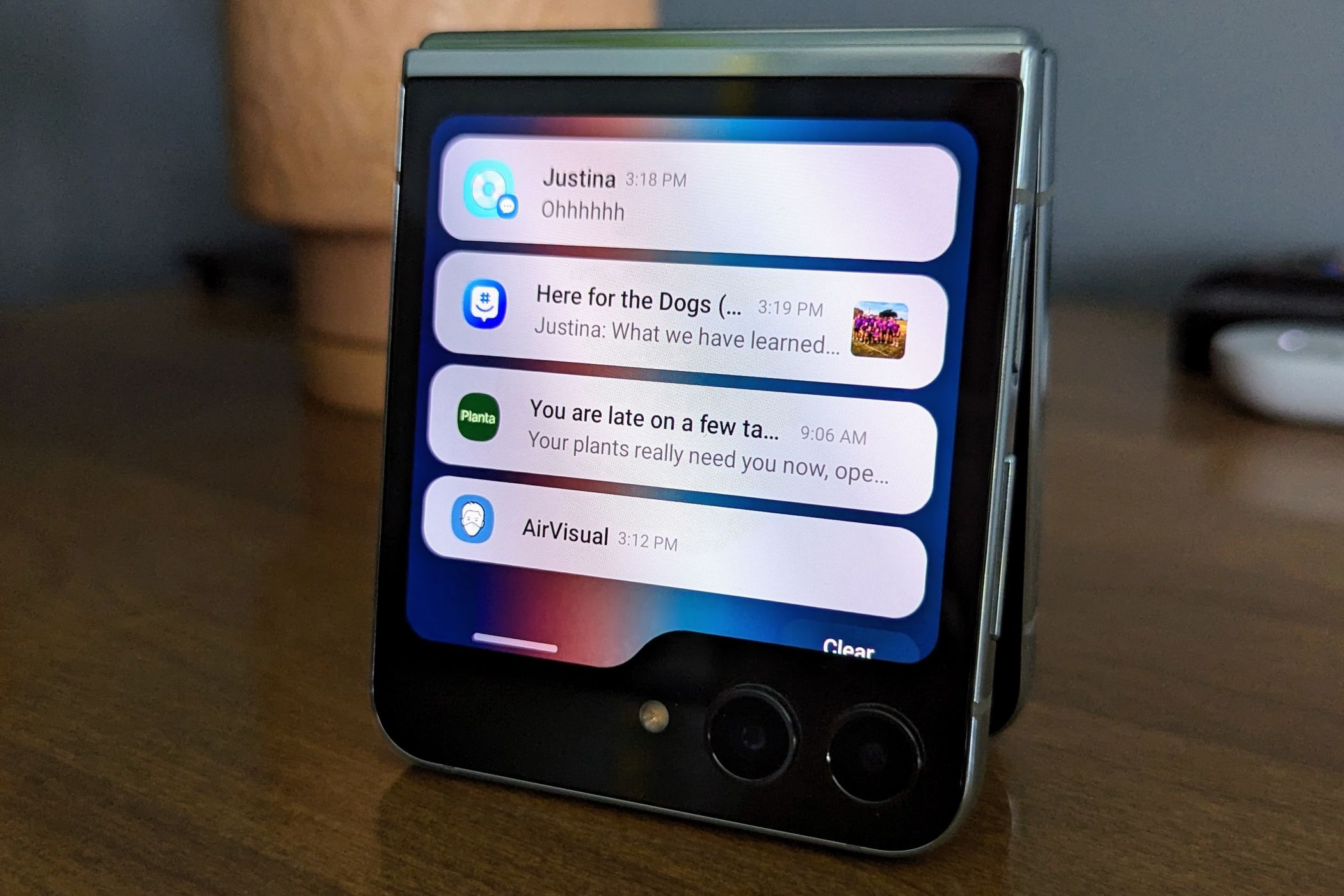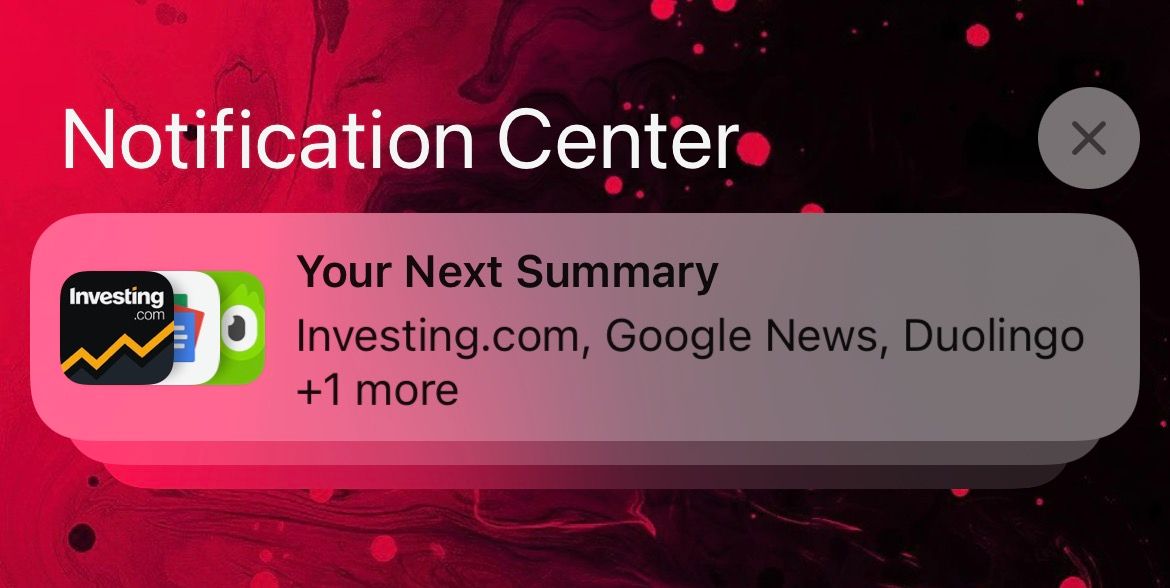Don\'t Let Your Phone Bully You, 4 Ways to Stop the Interruptions
First and foremost, the most important thing to understand is a smartphone is a tool. When you pick up a hammer, it only does what you want it to do—the same applies to a phone.
This is a common problem that many people have with their smartphones. They complain about apps sucking up their time or notifications constantly bothering them. Not to point fingers, but—who installed those apps? Who allowed notifications? Who has the power to turn them off? You.
You are in complete control of everything that happens on your phone. If there's a specific app that is bothering you with notifications, turn them off or uninstall the app. It may not always be easy to hunt down where the distractions are coming from, but there is almost always something you can do about it.
It's Okay to Miss Notifications

Smartphones have made it very easy to contact anyone (and be contacted) at any time. People are posting on social media at all hours of the day from around the world. There's always something new to see. FOMO is a big reason why notifications and app usage get out of hand.
Let's just be honest, there's a lot of stuff happening on your phone that is okay to miss. You don't need to enable notifications for every app that asks for it. Maybe you're a big sports fan and you like to keep up with news on the ESPN app. Is it really critical to your daily life to know the exact moment when an NBA player gets suspended?
It's much healthier and less interrupting to your life to simply open the app once or twice a day to check in when you have some free time. The same applies to social media apps. Sure, you'll miss some stuff, but the best stuff tends to bubble to the top. It'll be okay.
Give Yourself Daily Breaks
A great way to get away from the interruptions for a while is with some regular downtime. Android and the iPhone both have features that allow you to turn off the interruptions temporarily. Only the most important stuff will get through.
On the iPhone, the feature is literally called "Downtime." It's intended to be used on a schedule, which is perfect for giving yourself regular daily breaks from distractions. You can choose a time period for it to run and decide which people and apps are allowed to notify you.
Over on Android, the feature you'll want to use is called "Focus Mode." iPhones also have a feature with the same name, but it's slightly different. Focus Mode on Android allows you to quickly block distractions with a handy toggle switch or on a schedule.
How to Make Interruptions More Manageable

Maybe you can't get rid of all the interruptions completely, but there are ways to make them less of a nuisance. Notifications are a core part of smartphones, and there are tons of tools you can use to fine-tune the experience.
We'll start with the iPhone again, which probably has the easiest feature for making notifications more manageable. Apple introduced "Notification Summary" with iOS 15, and it does exactly what the name implies. Rather than notifications coming in immediately, they get bundled into a summary that arrives at scheduled times.
Android doesn't have a Notification Summary feature built-in (though that may change in Android 15). Instead, there are a few separate things to try. You can hide unimportant notification icons from the status bar, stop notifications from popping up over what you're doing, and disable specific types of notifications from apps.
The moral of the story is you are in control of your smartphone. Don't ever forget that. There's almost nothing that can't be uninstalled, disabled, or turned off. Don't let your phone be a cause of anxiety in your life.
-
 7 Ways to Fix Red Light Error on MotherboardIn the intricate world of computer hardware, the motherboard is your system’s backbone. However, even the most advanced and reliable motherboards are ...Software tutorial Published on 2024-11-14
7 Ways to Fix Red Light Error on MotherboardIn the intricate world of computer hardware, the motherboard is your system’s backbone. However, even the most advanced and reliable motherboards are ...Software tutorial Published on 2024-11-14 -
 Is Baldur’s Gate 3 Script Extender Not Working? Here’s GuideBaldur’s Gate 3 players reported issues with the Baldur’s Gate 3 Script Extender not working after launching the game, restricting their access. If yo...Software tutorial Published on 2024-11-12
Is Baldur’s Gate 3 Script Extender Not Working? Here’s GuideBaldur’s Gate 3 players reported issues with the Baldur’s Gate 3 Script Extender not working after launching the game, restricting their access. If yo...Software tutorial Published on 2024-11-12 -
 4 Ways to Fix MacBook Not Waking Up From SleepPreliminary Fixes Press the power button: Sometimes, a simple press of the power button can help resolve the issue. Press and hold the power button fo...Software tutorial Published on 2024-11-11
4 Ways to Fix MacBook Not Waking Up From SleepPreliminary Fixes Press the power button: Sometimes, a simple press of the power button can help resolve the issue. Press and hold the power button fo...Software tutorial Published on 2024-11-11 -
 3 Fixes for Display Connection Might Be Limited Error on WindowsTry Basic Fixes Rule out any compatibility issues: Only computers with USB-C ports that support DisplayPort alternate modes can transmit video and aud...Software tutorial Published on 2024-11-11
3 Fixes for Display Connection Might Be Limited Error on WindowsTry Basic Fixes Rule out any compatibility issues: Only computers with USB-C ports that support DisplayPort alternate modes can transmit video and aud...Software tutorial Published on 2024-11-11 -
 Microsoft Paint\'s AI Upgrades Finally Bring the Classic App Out of the 90sAs a 90s kid, hearing "Microsoft Paint" brings up memories of sitting at my friend's parent's clunky computer, drawing rudimentary d...Software tutorial Published on 2024-11-11
Microsoft Paint\'s AI Upgrades Finally Bring the Classic App Out of the 90sAs a 90s kid, hearing "Microsoft Paint" brings up memories of sitting at my friend's parent's clunky computer, drawing rudimentary d...Software tutorial Published on 2024-11-11 -
 How to Share Files from PC to PC Using IP Address on WindowsDid you know you can send and receive files via FTP using your IP address? This post from MiniTool introduces how to share files from PC to PC using I...Software tutorial Published on 2024-11-09
How to Share Files from PC to PC Using IP Address on WindowsDid you know you can send and receive files via FTP using your IP address? This post from MiniTool introduces how to share files from PC to PC using I...Software tutorial Published on 2024-11-09 -
 Easily Fixed – Black Ops 6 Black Screen on Windows 10/11There’s nothing more frustrating than encountering black screen while starting Black Ops 6 or in the middle of the game. Don’t worry. This guide from ...Software tutorial Published on 2024-11-09
Easily Fixed – Black Ops 6 Black Screen on Windows 10/11There’s nothing more frustrating than encountering black screen while starting Black Ops 6 or in the middle of the game. Don’t worry. This guide from ...Software tutorial Published on 2024-11-09 -
 Windows 11 Is Fixing a Big Issue With WebcamsMicrosoft has been on a roll as of lately when it comes to lifting arbitrary, extremely limiting restriction from Windows 11. The latest one is a res...Software tutorial Published on 2024-11-09
Windows 11 Is Fixing a Big Issue With WebcamsMicrosoft has been on a roll as of lately when it comes to lifting arbitrary, extremely limiting restriction from Windows 11. The latest one is a res...Software tutorial Published on 2024-11-09 -
 4 Ways to Add Text to Videos on iPhoneMethod 1: Use Clips to Add Text Prompts on Videos iPhone’s default video editor doesn’t support inserting text on videos. In its place, you can use th...Software tutorial Published on 2024-11-09
4 Ways to Add Text to Videos on iPhoneMethod 1: Use Clips to Add Text Prompts on Videos iPhone’s default video editor doesn’t support inserting text on videos. In its place, you can use th...Software tutorial Published on 2024-11-09 -
 California Now Supports Digital IDs on iPhoneiPhone owners in California will soon have one more reason to leave their wallets at home. The company announced Thursday that Apple Wallet is adding...Software tutorial Published on 2024-11-09
California Now Supports Digital IDs on iPhoneiPhone owners in California will soon have one more reason to leave their wallets at home. The company announced Thursday that Apple Wallet is adding...Software tutorial Published on 2024-11-09 -
 ASUS Vivobook S 15 OLED BAPE Edition Review: Stealthy, Stylish, and PracticalWhen companies attempt to blend consumer technology with fashion, there's often a disconnect between functionality and aesthetic appeal. The ASUS...Software tutorial Published on 2024-11-09
ASUS Vivobook S 15 OLED BAPE Edition Review: Stealthy, Stylish, and PracticalWhen companies attempt to blend consumer technology with fashion, there's often a disconnect between functionality and aesthetic appeal. The ASUS...Software tutorial Published on 2024-11-09 -
 Fortnite Returns to iPhone, and Finds a New Android HomeFour years after its removal from Google’s and Apple’s mobile stores, Fortnite is now available to iPhone owners in the European Union (EU), and ther...Software tutorial Published on 2024-11-09
Fortnite Returns to iPhone, and Finds a New Android HomeFour years after its removal from Google’s and Apple’s mobile stores, Fortnite is now available to iPhone owners in the European Union (EU), and ther...Software tutorial Published on 2024-11-09 -
 Download the iOS 18 Wallpapers for Your iPhoneThe power-packed WWDC 24′ main event featured the launch of iOS 18 – which primarily focused on bringing some of the much-awaited customization featur...Software tutorial Published on 2024-11-09
Download the iOS 18 Wallpapers for Your iPhoneThe power-packed WWDC 24′ main event featured the launch of iOS 18 – which primarily focused on bringing some of the much-awaited customization featur...Software tutorial Published on 2024-11-09 -
 Windows Resource Protection Found Corrupt Files: 6 FixesType sfc /scannow and press Enter. Wait for the scan to complete (it may take some time). Restart your computer after the scan finishes. 2. Use the D...Software tutorial Published on 2024-11-09
Windows Resource Protection Found Corrupt Files: 6 FixesType sfc /scannow and press Enter. Wait for the scan to complete (it may take some time). Restart your computer after the scan finishes. 2. Use the D...Software tutorial Published on 2024-11-09 -
 How to Unlock Notes When Password Is Forgotten on Mac and iPhoneDid you have a frustrating moment when you realized you’d forgotten the password to your Notes on your Mac and iPhone? The panic sets in as you wonder...Software tutorial Published on 2024-11-09
How to Unlock Notes When Password Is Forgotten on Mac and iPhoneDid you have a frustrating moment when you realized you’d forgotten the password to your Notes on your Mac and iPhone? The panic sets in as you wonder...Software tutorial Published on 2024-11-09
Study Chinese
- 1 How do you say "walk" in Chinese? 走路 Chinese pronunciation, 走路 Chinese learning
- 2 How do you say "take a plane" in Chinese? 坐飞机 Chinese pronunciation, 坐飞机 Chinese learning
- 3 How do you say "take a train" in Chinese? 坐火车 Chinese pronunciation, 坐火车 Chinese learning
- 4 How do you say "take a bus" in Chinese? 坐车 Chinese pronunciation, 坐车 Chinese learning
- 5 How to say drive in Chinese? 开车 Chinese pronunciation, 开车 Chinese learning
- 6 How do you say swimming in Chinese? 游泳 Chinese pronunciation, 游泳 Chinese learning
- 7 How do you say ride a bicycle in Chinese? 骑自行车 Chinese pronunciation, 骑自行车 Chinese learning
- 8 How do you say hello in Chinese? 你好Chinese pronunciation, 你好Chinese learning
- 9 How do you say thank you in Chinese? 谢谢Chinese pronunciation, 谢谢Chinese learning
- 10 How to say goodbye in Chinese? 再见Chinese pronunciation, 再见Chinese learning

























